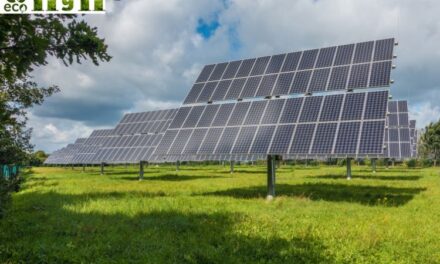ECO3 and the Renewable– The UK government has introduced several schemes to encourage homeowners to adopt energy-efficient measures and renewable heating technologies. Among these, the Energy Company Obligation (ECO3) and the Renewable Heat Incentive (RHI) stand out as two of the most impactful initiatives. While each scheme has its unique benefits, combining ECO3 with RHI can lead to significant savings and a more sustainable home. This blog will guide you through how these schemes work, their individual advantages, and how you can leverage them together for maximum benefit.
What is ECO3?
The Energy Company Obligation (ECO3) is a government initiative designed to reduce carbon emissions and tackle fuel poverty in the UK. It requires larger energy suppliers to fund energy efficiency improvements in eligible households. ECO3 primarily focuses on measures like loft and cavity wall insulation, boiler replacements, and heating upgrades. The goal is to make homes more energy-efficient, reducing heating costs and improving comfort for low-income and vulnerable households.
What is the Renewable Heat Incentive (RHI)?
The Renewable Heat Incentive (RHI) is a government scheme that provides financial incentives to homeowners, landlords, and businesses that install renewable heating systems. The RHI pays participants for the heat generated by systems such as air source heat pumps, ground source heat pumps, biomass boilers, and solar thermal panels. The scheme aims to encourage the adoption of renewable energy technologies and reduce reliance on fossil fuels.
Can ECO3 and RHI Be Combined?
Yes, ECO3 and RHI can be combined to maximise energy savings and reduce heating costs. Here’s how:
1. ECO3 for Energy Efficiency Improvements
Start by using ECO3 funding to improve your home’s energy efficiency. Measures like insulation, draught-proofing, and boiler upgrades reduce heat loss and lower your overall energy demand. A well-insulated home requires less energy to heat, making your renewable heating system more effective.
2. RHI for Renewable Heating Systems
Once your home is energy-efficient, consider installing a renewable heating system funded through the RHI. For example, an air source heat pump or biomass boiler can provide sustainable heating while earning you payments for the heat generated.
3. Maximising Savings
By combining ECO3 and RHI, you can significantly reduce your energy bills. ECO3 measures lower your energy consumption, while RHI payments offset the cost of running your renewable heating system. Together, they create a comprehensive energy-saving solution.
Benefits of Combining ECO3 and RHI
1. Lower Energy Bills
Improving your home’s energy efficiency and switching to renewable heating can drastically reduce your energy bills.
2. Reduced Carbon Footprint
Both ECO3 and RHI contribute to lowering carbon emissions, helping the UK achieve its net-zero carbon emissions target.
3. Financial Incentives
ECO3 provides funding for energy efficiency improvements, while RHI offers payments for renewable heat generation. Combining the two maximises your financial benefits.
4. Increased Property Value
A well-insulated home with a renewable heating system is more attractive to buyers and can increase your property’s market value.
5. Enhanced Comfort
ECO3 measures eliminate cold spots and draughts, while renewable heating systems provide consistent and reliable warmth.
Steps to Combine ECO3 and RHI
1. Assess Your Home’s Energy Efficiency
Start by evaluating your home’s current energy efficiency. Look for areas where heat is being lost, such as poorly insulated walls or an old, inefficient boiler.
2. Apply for ECO3 Funding
If you’re eligible for ECO3, apply for funding to improve your home’s energy efficiency. Common measures include loft insulation, cavity wall insulation, and boiler replacements.
3. Choose a Renewable Heating System
Once your home is energy-efficient, select a renewable heating system that suits your property and heating needs. Options include air source heat pumps, ground source heat pumps, biomass boilers, and solar thermal panels.
4. Apply for the RHI
After installing your renewable heating system, apply for the RHI to receive payments for the heat generated. Ensure your system meets the scheme’s eligibility criteria.
5. Monitor and Optimise
Use smart controls and energy monitoring tools to optimise your heating system’s performance. Regularly review your energy usage to maximise savings.
Eligibility for ECO3 and RHI
ECO3 Eligibility
To qualify for ECO3, you must meet certain criteria, such as receiving qualifying benefits (e.g., Income Support, Pension Credit, or Universal Credit) and having a low Energy Performance Certificate (EPC) rating.
RHI Eligibility
To be eligible for the RHI, your renewable heating system must be installed by a certified installer and meet the scheme’s technical requirements. You must also provide evidence of the heat generated, such as meter readings.
Conclusion
Combining ECO3 and the Renewable Heat Incentive (RHI) is a smart way to improve your home’s energy efficiency, reduce heating costs, and lower your carbon footprint. By using ECO3 to make your home more energy-efficient and RHI to install a renewable heating system, you can create a comprehensive energy-saving solution that benefits both your wallet and the environment.
For homeowners in the UK, this powerful combination offers a unique opportunity to embrace sustainable living while enjoying significant financial rewards. Take the first step towards a warmer, greener home today by exploring the potential of ECO3 and RHI.
By combining ECO3 and RHI, you’ll not only save money but also contribute to a more sustainable future. Stay warm, stay efficient, and make the most of these valuable schemes!
https://econgn.com/top-5-renewable-heating-solutions-for-rural-homes/





